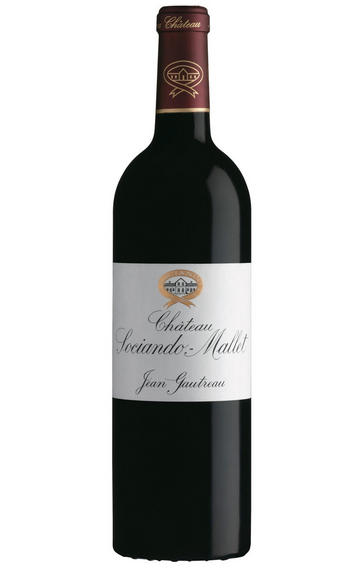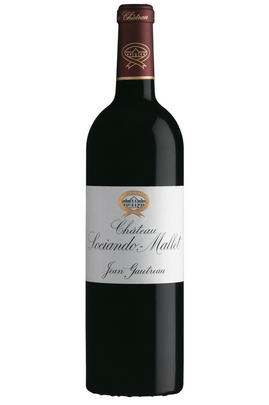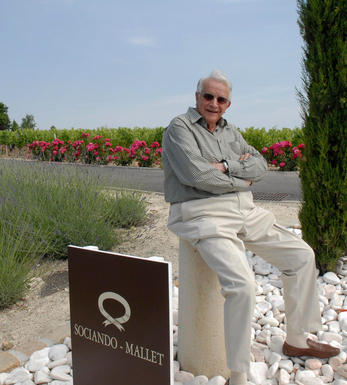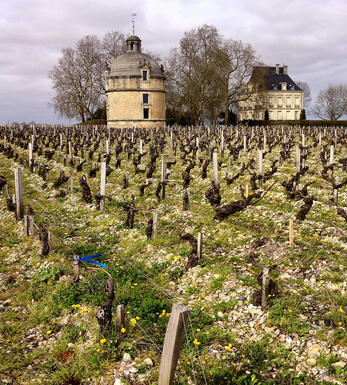
2021 Château Sociando-Mallet, Haut-Médoc, Bordeaux

Critics reviews
The 2021 Sociando-Mallet has a well-defined nose of tertiary black fruit, undergrowth and smoky scents. The palate is medium-bodied with grainy tannins. Not a powerful Sociando, but fresh and saline, tapering just slightly toward the finish.
Drink 2027 - 2042
Neal Martin, vinous.com, (May 2022)
Sylvie Gautreau is the 2nd generation owner of this well loved 77ha estate, and has produced an excellent wine within the vintage. This is not up there with the most concentrated of Sociandos, but there is liqourice, fennel, marzipan, spice, and juicy blueberry fruits. Tasted twice, each time clear that this is an enjoyable wine but also that even at this benchmark estate you can see the challenges of the vintage in the Haut-Médoc appellation. 48hl/h yield, Michel-Bernad Couanson consultant. Harvest September 27 to October 13.
Drink 2024 - 2036
Jane Anson, janeanson.com (May 2022)
Offering up aromas of dark berries, licorice, cigar wrapper and loamy soil, the 2021 Sociando-Mallet is medium to full-bodied, bright and concentrated, with an impressively layered core of fruit, tangy acids and a long, saline finish. The blend is 54% Cabernet Sauvignon, 44% Merlot and 2% Cabernet Franc, with late-harvested Cabernet Sauvignon, picked through to October 14, providing the heart of the wine.
William Kelley, Wine Advocate (Apr 2022)
A solid red as always, with a medium body. Blackcurrants, dark earth, black mushrooms and some bark. Chewy yet polished tannins.
James Suckling, jamessuckling.com (May 2022)
About this WINE

Chateau Sociando-Mallet
Chateau Sociando-Mallet is an outperforming Cru Bourgeois property located in the commune of Saint-Seurin-de-Cadourne in the Haut-Médoc. Quality was inconsistent until the property was purchased by Jean Gautreau in 1969. It then consisted of only 7 hectares and in the last 30 years Jean Gautreau has expanded the vineyards to 57 hectares.
The vineyards, which lie close to the Gironde Estuary, are planted with Cabernet Sauvignon (60%), Merlot (25%), Cabernet Franc (25%) and Petit Verdot (5%). The grapes are hand picked and then fermented in a combination of stainless steel and concrete tanks. The wines are matured in oak barriques (70-90% new) for 12-15 months. They are bottled unfined and unfiltered.
These are weighty, firm and well-structured clarets that are typically rich in fruit and have excellent ageing potential. As Jean Gautreau says: "I have a superb terroir which I want to express in the wine. I try to make a classic Médoc for long keeping."

Haut-Medoc
Despite being as visually unprepossessing as the rest of the Médoc (despite its grandiose châteaux) this large red-wine appellation of Haut-Médoc is home to some of the world’s greatest wines. Its 4,500 hectares of vineyards form a largely continuous strip that follows the Gironde from St Seurin-de-Cadourne, just north of St Estèphe, to Blanquefort in the northern suburbs of Bordeaux.
All the great communes of the Left Bank fall within its boundaries: Margaux, St Julien, Pauillac and St Estèphe, as well as the up and coming Moulis and Listrac. These are labelled under their own, more illustrious and expensive appellation names. Châteaux labelled simply as Haut-Médoc rarely reach such heights, but nevertheless offer consistently good quality and offer some of the best value in Bordeaux.
Haut-Médoc wines tend to be firm and fine with generous fruit and a nice minerality – what many would consider ‘classic Claret’. They come from loftier vineyards and offer higher quality and more complexity than those labelled simply as ‘Médoc’. Almost all wines are a blend of the principal varieties – Cabernet Sauvignon, Merlot and Cabernet Franc – which helps producers hedge their bets if the slightly capricious climate causes one variety to fail. Small amounts of Petit Verdot, Malbec and even Carmenère are also used.
The higher proportion of sand and gravel to the south tends to produce finer wines, while the heavier clay and gravel north of Margaux yields sturdier examples. The best Haut-Médocs are found north of Ludon, a village just below Margaux. These include five classified Growths: Third Growth Ch. La Lagune, underperforming Fourth Growth Ch. la Tour Carnet and Fifth Growths Ch. Cantemerle, Ch. Camensac and Ch. Belgrave – as well as a number of fine Cru Bourgeois. Ageing ability varies but the lesser wines are usually delicious after three to four years, lasting around a decade, while the Cru Classés have a drinkability window of around six to 15 years.
Recommended Châteaux (labelled as Haut-Médoc): Ch. Beaumont, Ch. Belgrave, Ch. Cantemerle, Ch. Peyrabon

Merlot/Cabernet Franc
Merlot and Cabernet Franc are grape varieties commonly used in Bordeaux-style blends, particularly in the Bordeaux region of France. When these two grapes are blended, they can create a wine that combines the best characteristics of each variety.
Merlot is known for its smoothness, soft tannins, and ripe fruit flavours. It often contributes black cherry, plum, and chocolate flavours to the blend. The grapes are relatively easy to grow and ripen earlier than other Bordeaux varieties, making them versatile for blending.
Cabernet Franc, on the other hand, adds structure, depth, and complexity to the blend. It typically brings aromas of red fruits such as raspberry and strawberry, along with herbal notes like bell pepper and tobacco. These grapes have thinner skins and can be more challenging to cultivate, requiring specific growing conditions to reach their full potential.
When Merlot and Cabernet Franc are combined, the result is a well-balanced wine with various flavours and aromas. The blend often exhibits a Bordeaux wine's medium to full body, along with a smooth texture and moderate tannins. The specific flavour profile can vary depending on the proportions of each grape in the blend and the terroir and winemaking techniques employed.


Buying options
Add to wishlist
Description
Cabernet Sauvignon 54%, Merlot 44%, Cabernet Franc 2%
This is a well-managed wine under the circumstances. Everything is nicely in place, with pure and bright notes of herb and cassis, and some handsome tannins. However, these do grip the wine a little on the finish and bring it up a little short. Taken on its own terms as a lighter-weight, easier-drinking style than is usual at this property, there is still pleasure to be found here. Drink 2024-2034.
Our score: 15/20
Berry Bros. & Rudd, April 2022
wine at a glance
Delivery and quality guarantee